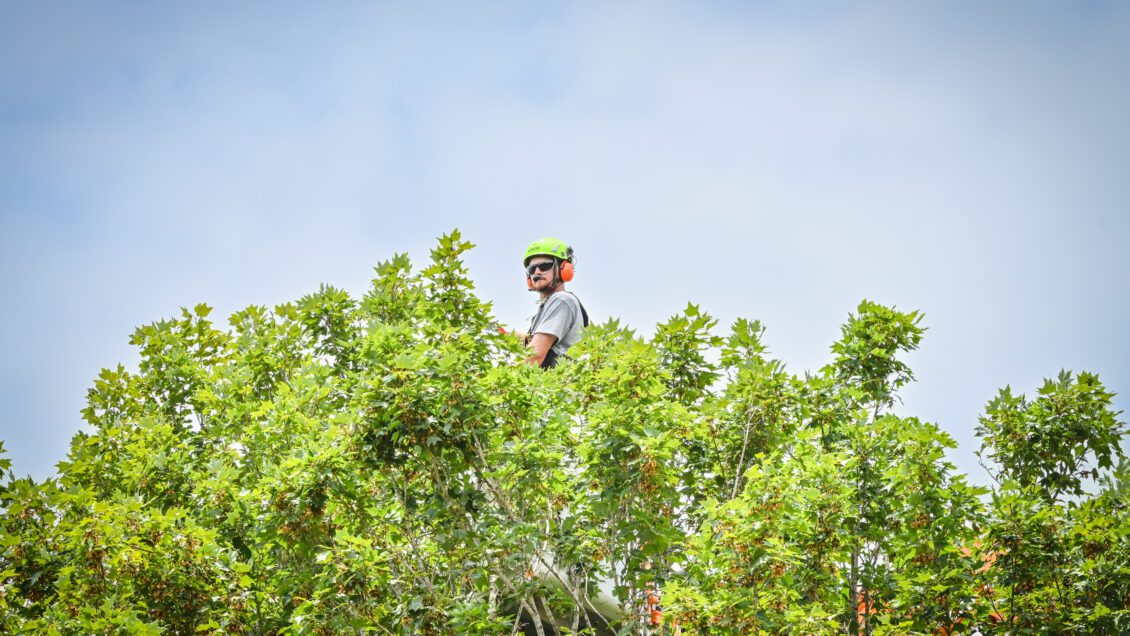A stroll across Clemson University’s picturesque main campus takes you on paths that wind past fountains and flowerbeds and cut through layers of immaculately groomed courtyards under lush, leafy canopies. These 700 acres are more than just land — a significant percentage of students cite the pastoral campus as one reason they chose to become Tigers.
Campus is home to more than 6,500 trees, all documented and managed by Clemson’s Landscape Services department. None of the trees existed when Clemson was founded in 1889. Still, today, they form an urban forest that significantly contributes to the bucolic atmosphere perfectly befitting of South Carolina’s premier land-grant university.
Clemson’s campus began as a vast area of openness, primarily farmland. But shortly after WWI the cotton boll weevil hit the South and transformed that farmland into abandoned clay fields which turned into vast swaths of eroded earth, explains Pat Layton, professor of forestry and director of the Wood Utilization + Design Institute.
“Most of what we see now was reforested by the Civilian Conservation Corps under the Roosevelt administration or is just naturally established regeneration that blew in or was brought in by squirrels and birds,” Layton says. “It’s all grown since farming in the area ended in the mid-to-late 1930s.”
A new urban forest
Today, maintaining Clemson’s urban forest is a complicated task involving continual assessment of every tree on campus. New construction as the University has grown its programs and people over the past decade has also made the upkeep of the forest perpetually challenging.
Trees that have been randomly placed by weather or wildlife can become unstable and dangerous, Layton says. The current plan is to plant multiple trees, properly placed and of noninvasive species, for every tree that has to be removed for safety or construction projects so that, in the end, there will be a net gain of trees on campus.
The University’s official policy is to provide “a safe, attractive, educational and sustainable campus urban forest through preservation of existing trees and new tree plantings.”
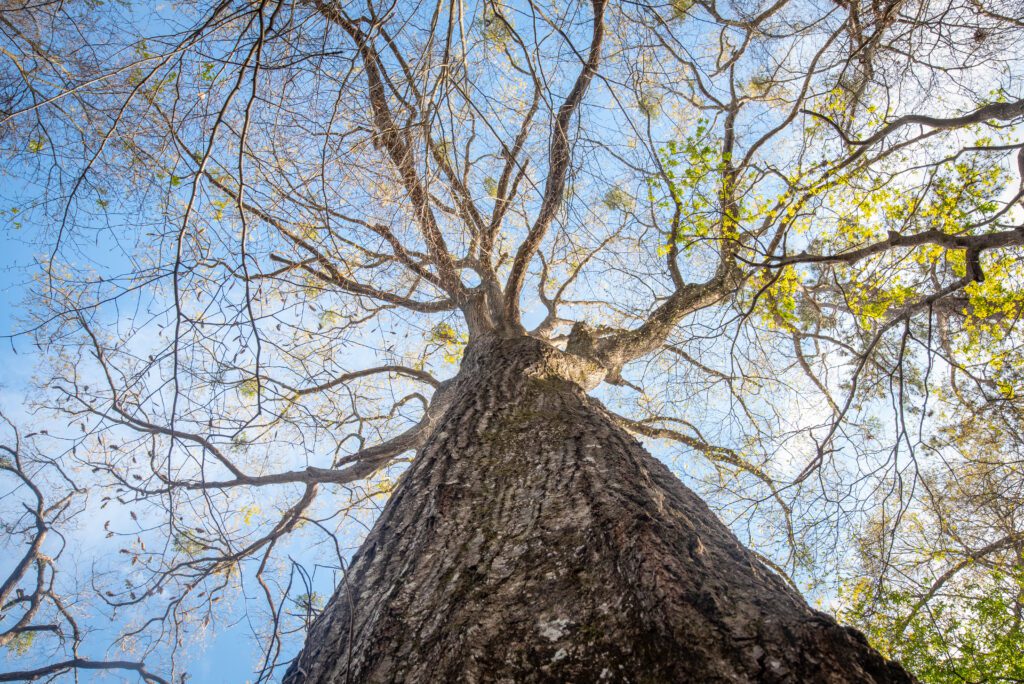
Jennifer Goree, chair of the Clemson University Sustainability Commission, said urban forests also play a big part in the University’s carbon sequestration plan, its pledge to do its part to mitigate climate change.
According to the U.S. Department of Agriculture, urban trees can “reduce concentrations of atmospheric carbon dioxide by storing carbon in their roots, stems and branches. Urban forests can also help reduce carbon dioxide emissions from fossil-fuel-based power plants because their shade and wind protection reduces energy consumption for heating and cooling buildings. By estimating the amount of carbon removed by trees, organizations can determine the role of urban forests in mitigating climate change and also assign an economic value to the amount of carbon sequestered by an urban forest.”
“Our trees are a critical part of our Sustainability Action Plan,” said Goree. “We know which trees are most efficient at sequestering carbon. We can use that knowledge to choose what trees we plant in the future. Also, the more trees we have on campus, the more space we create for birds and other species, which helps support biodiversity.”
Dead or diseased beyond-preservation trees, along with those that constitute a safety hazard or interfere with utilities, building maintenance and the construction of facilities and associated site development are among those that are most commonly identified for removal.
Team tree work
Caring for Clemson’s trees is a full-time job for arborist Keegan Bodiford and his team.
“Our day-to-day varies throughout the year,” said Bodiford, campus arborist for Clemson University Facilities’ Landscape Services department. “During the summer, we are trying to mitigate risk in highly trafficked housing, academic and football-parking areas in which we will struggle to work during the school year. Once the fall rolls around, we will continue our risk mitigation and pruning, but as we get closer to winter, we will start to switch over to our annual inspections.”
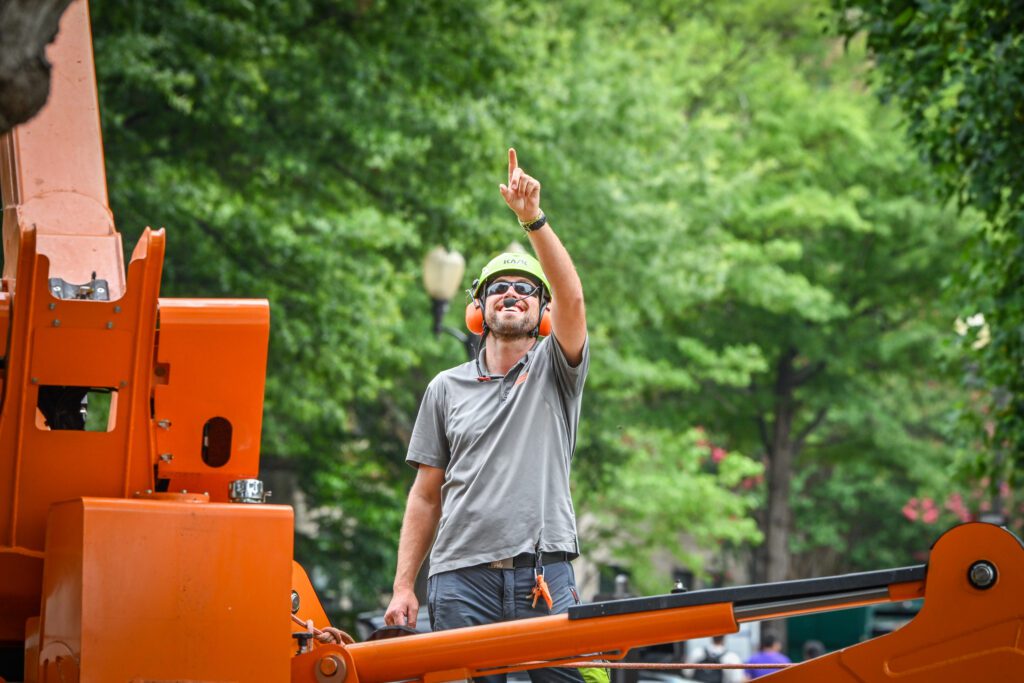
Yearly inspections include a full 360-degree inspection of each entire tree on campus, said Bodiford. If any concerns or defects are discovered during the inspection, an outside, unbiased, International Society of Arboriculture-qualified tree risk assessor is brought in to inspect the tree.
“We plant new trees on campus throughout the winter, and we address any recommendations from the tree risk assessor in the spring and early summer,” said Bodiford. “Then the cycle repeats itself. All year we run the risk of dealing with storm damage.”
Trees that have to be removed are repurposed in several ways. Maybe most notably — the boxes that Clemson class rings come in, which number in the thousands each year, are made from Clemson trees.
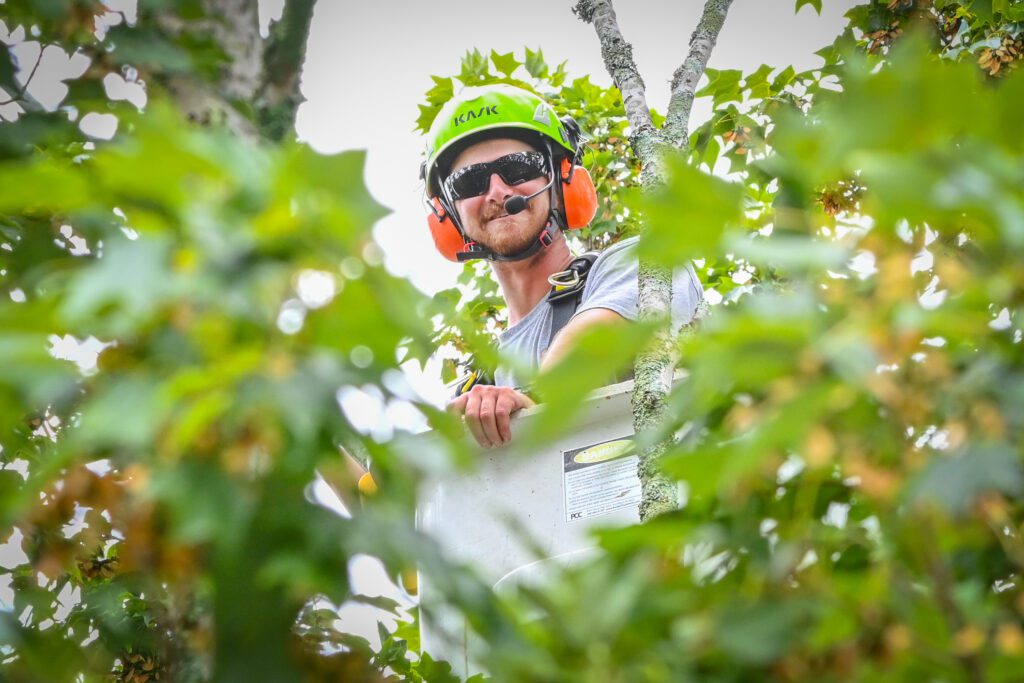
Other trees are milled into flooring, benches, tables and walls that can be seen in the Wilbur O. and Ann Powers College of Business, the Andy Quattlebaum Outdoor Education Center and the Samuel J. Cadden Chapel, among others, with more than 6,000 board feet designated for installation in the new College of Agriculture, Forestry and Life Sciences building. Some wood is also distributed to artisans who turn it into bowls and other works of art, and some is ground up into mulch that is used to help keep the vegetation on campus healthy. Two of the lumber mills the University uses, Tidewater Lumber in Greer and Whetstone Designs in Edgefield, are owned by Clemson graduates.

Layton and her team recently received a grant from the Sustainable Forestry Initiative to help test a new national standard on urban forest management, specifically for a college campus.
“The work we’ve been doing with our grant has been to look at how do we treat and manage the urban forest on our campus for not only the biodiversity, habitat and water quality but also for safety and health,” she said. “Anybody can walk along these streets, so we have to be very present on how we manage our trees. It’s not like having a flower bed.”
Layton said the new national standard is being pilot-tested at Clemson but could be adopted internationally if it proves effective.
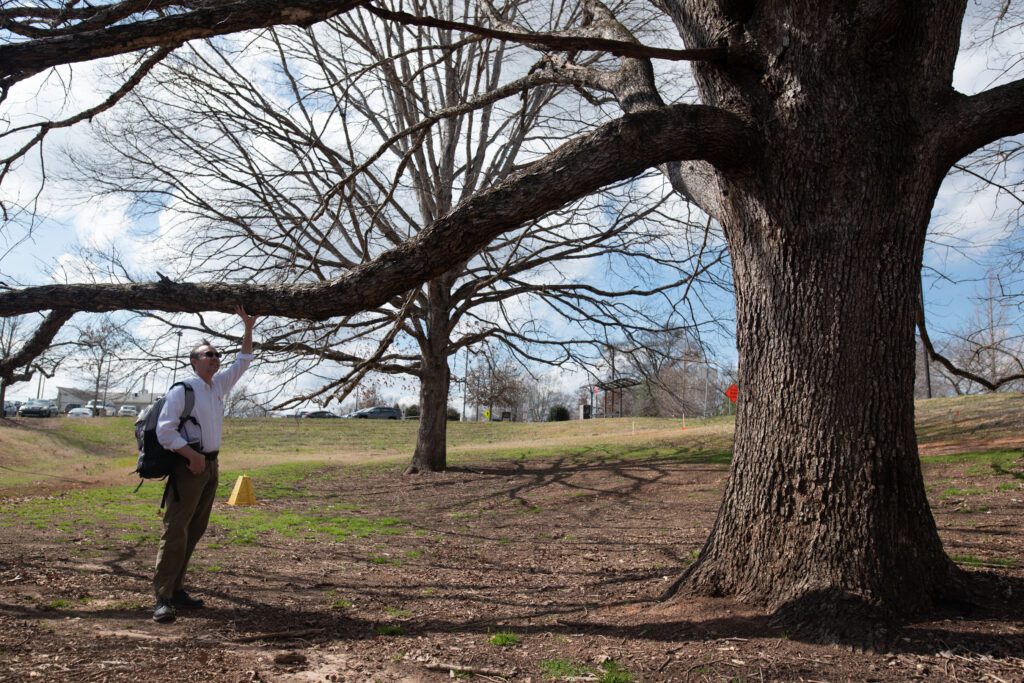
“It’s really about fostering an attitude of including our forests in our infrastructure decisions,” she said.
Keeping the woods that blanket the University’s lands healthy is a priority for every entity overseeing the school’s evolution. It’s a binding agreement that necessitates collaborations between student organizations, finance offices, administration officials, University Facilities, representatives from each college and school, and more.
“The trees on Clemson’s campus are one of this University’s great assets,” said Paul Borick, building project manager for University Facilities. “Together they create an arboretum that covers our campus in beauty that must be preserved. Clemson is in the middle of a historic building boom, with construction and renovation projects seemingly around every corner. Rest assured, the maintenance and preservation of the campus forest is built into every project because it would not be Clemson without it.”

